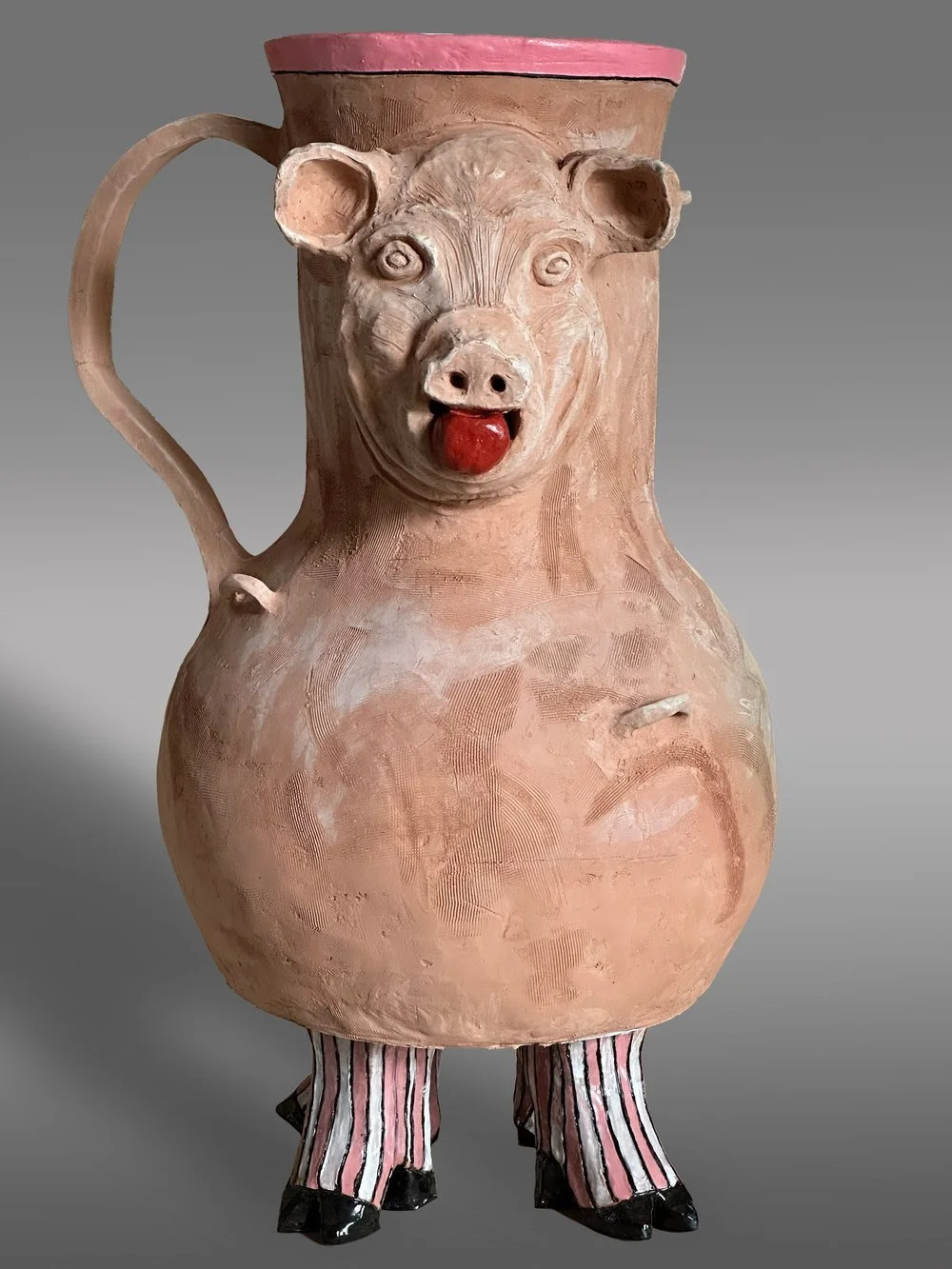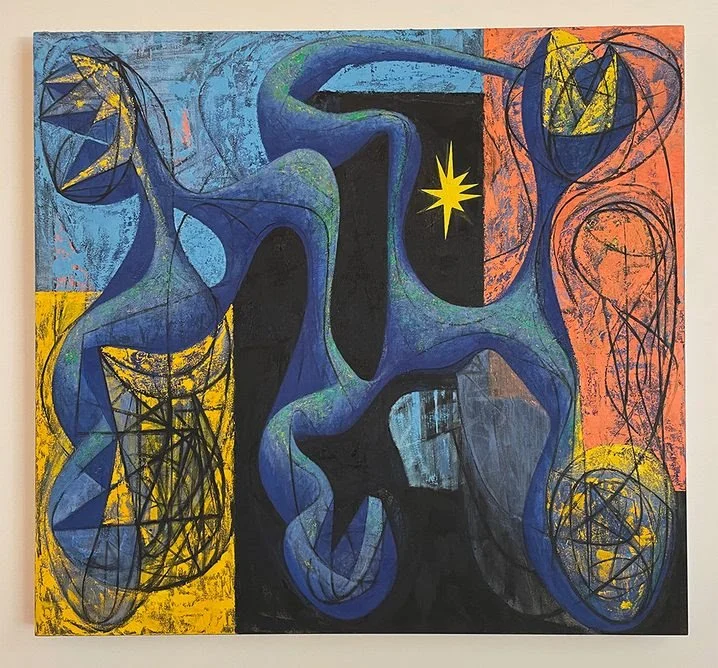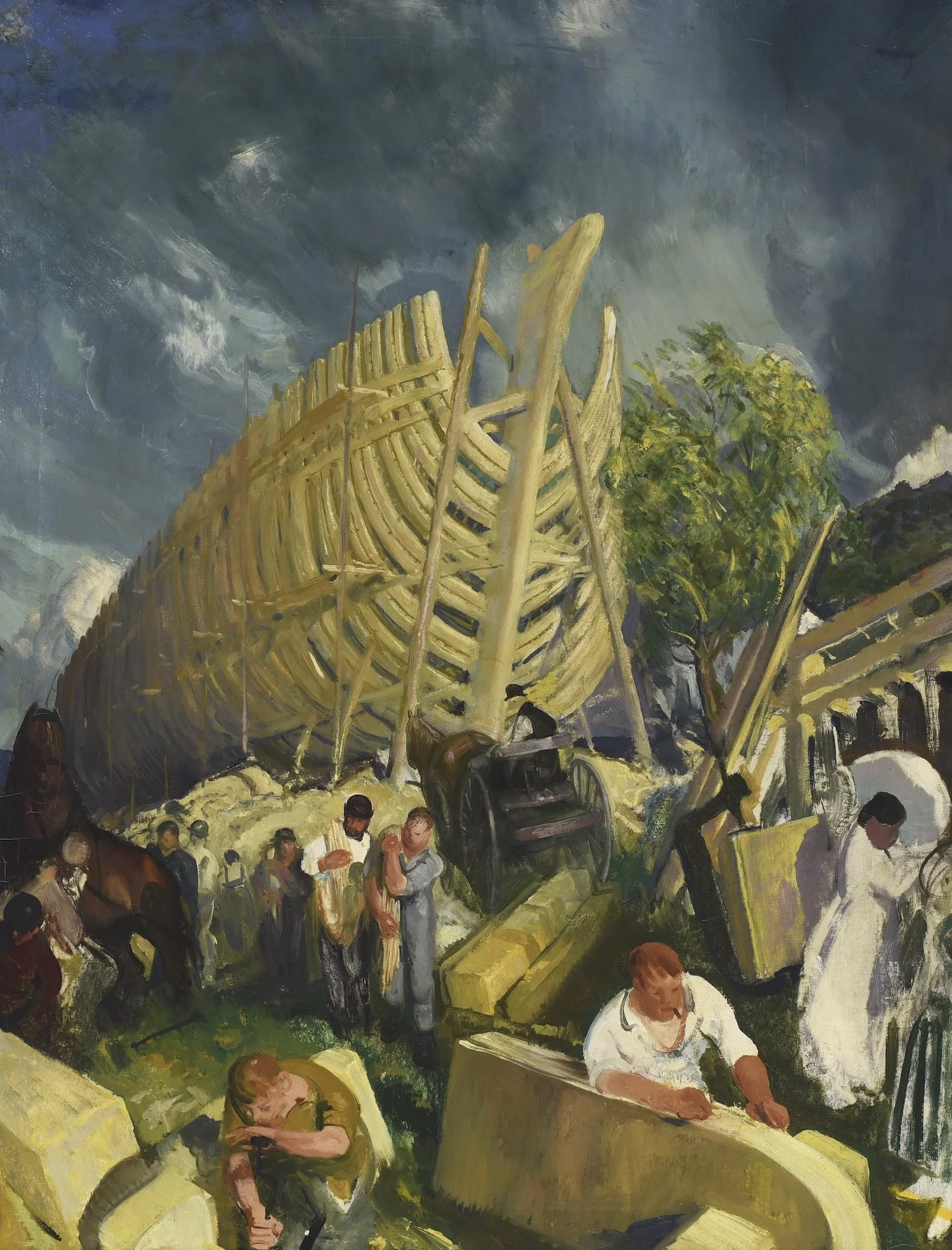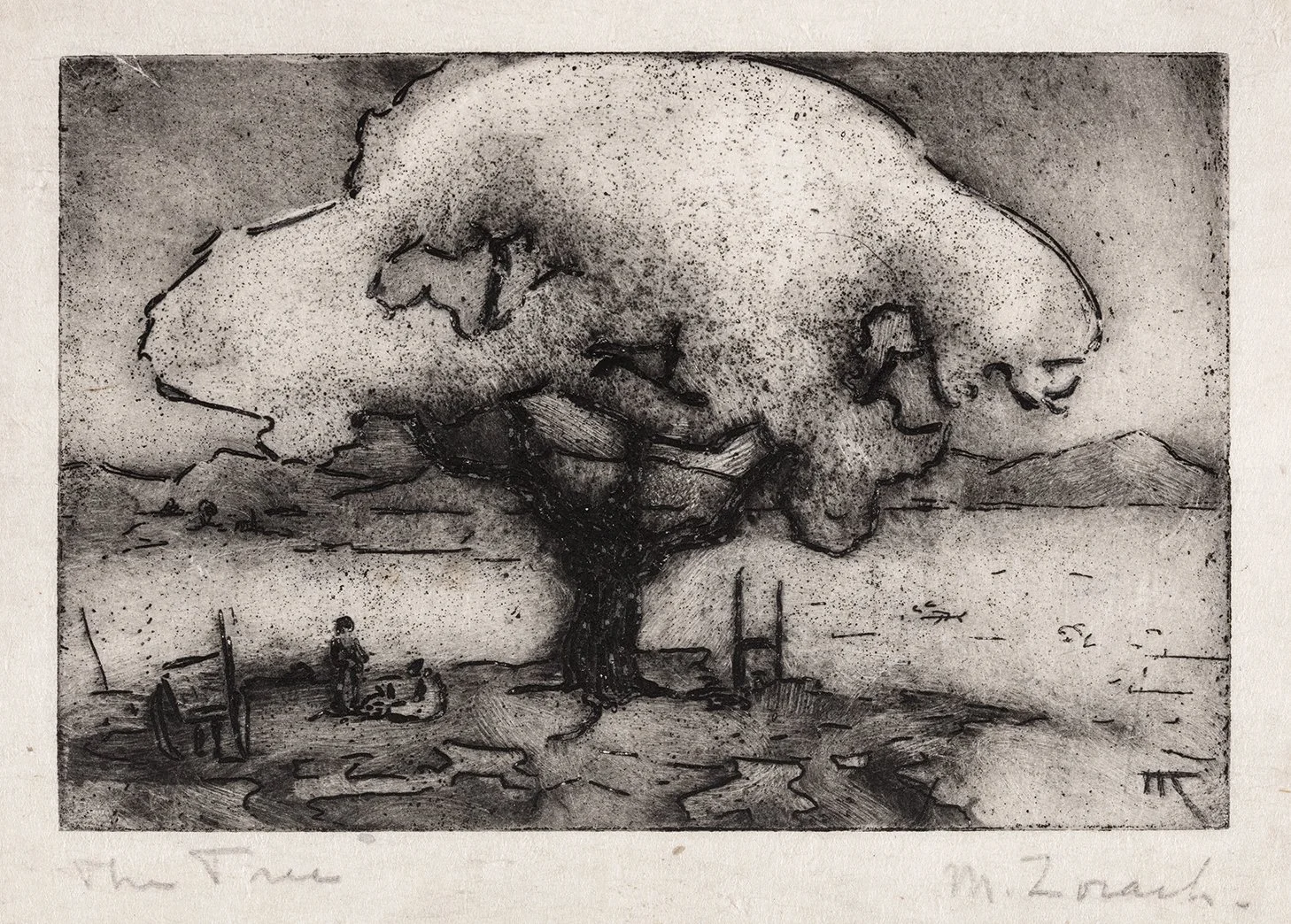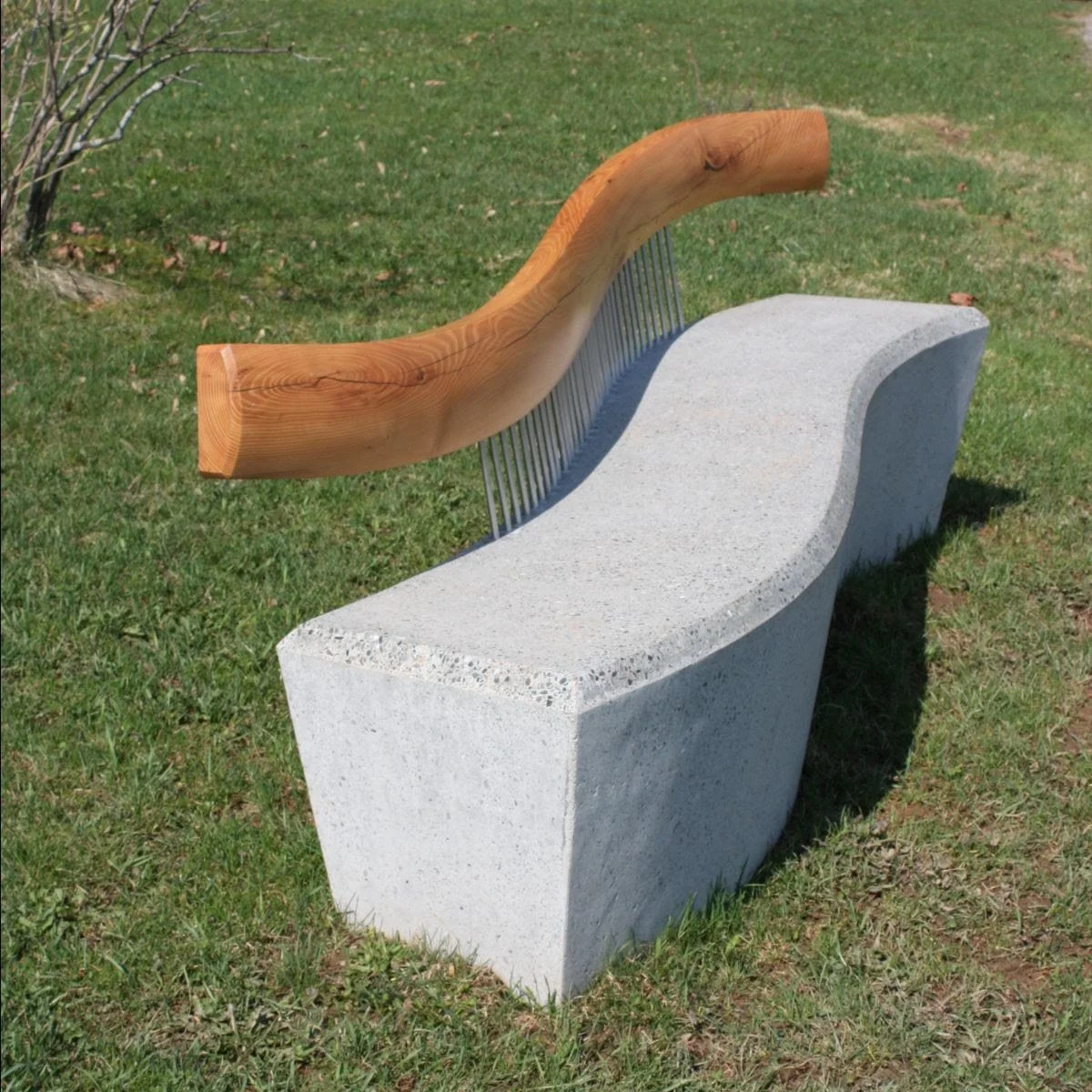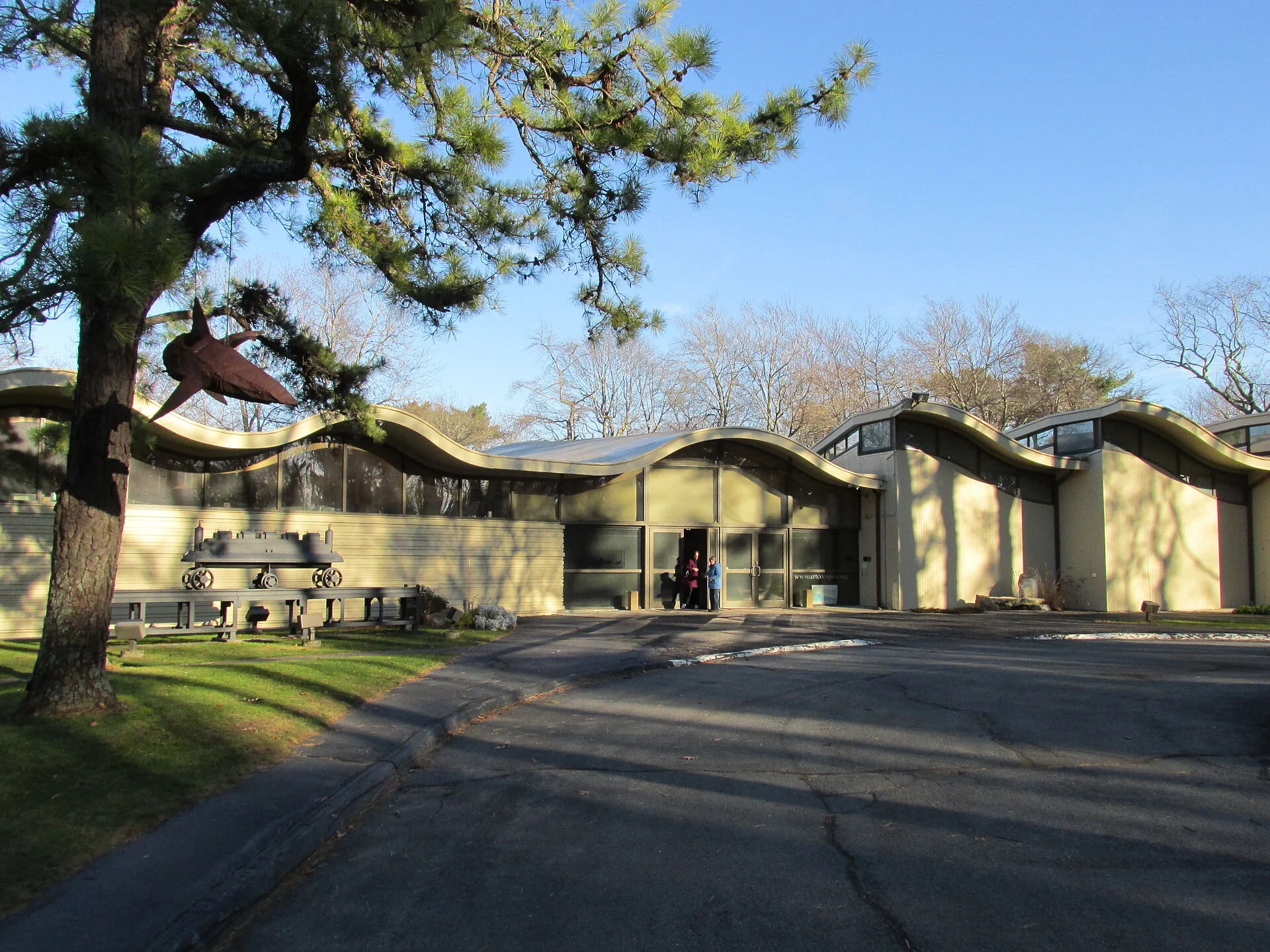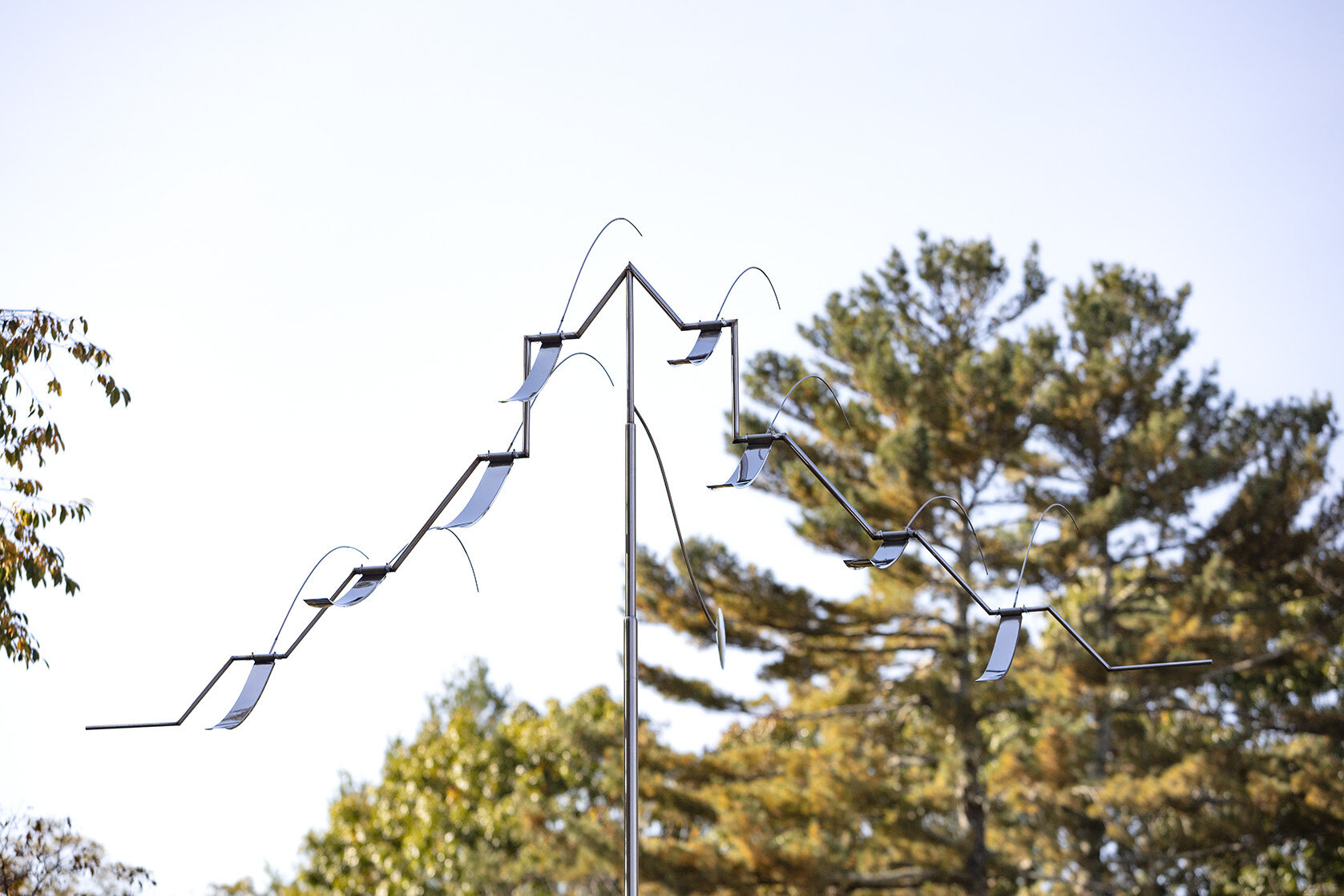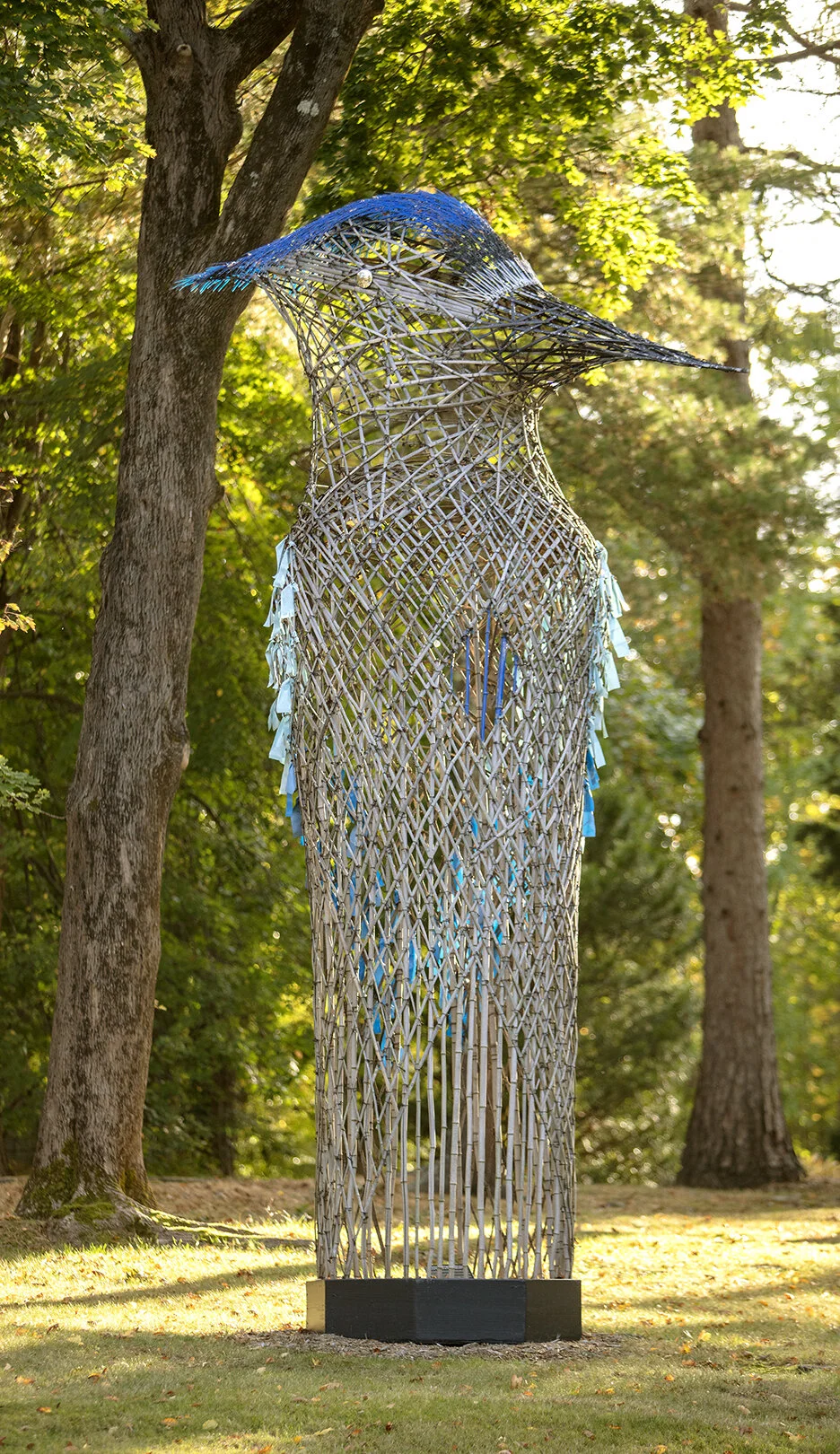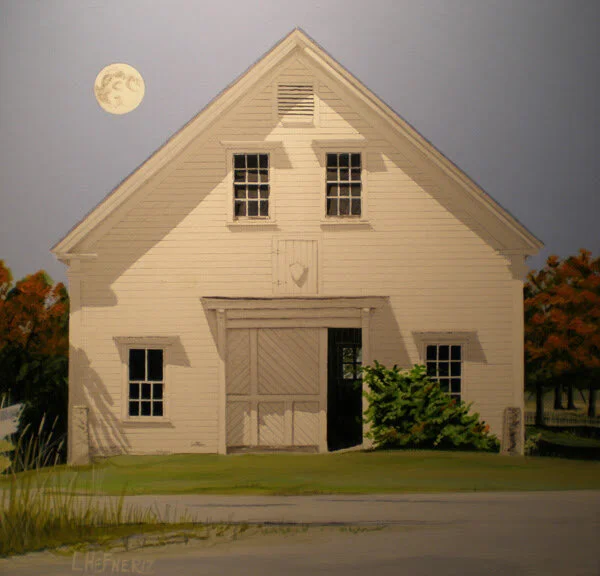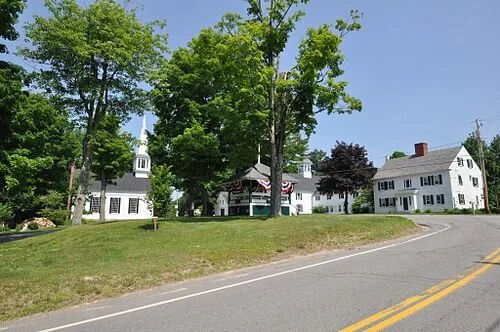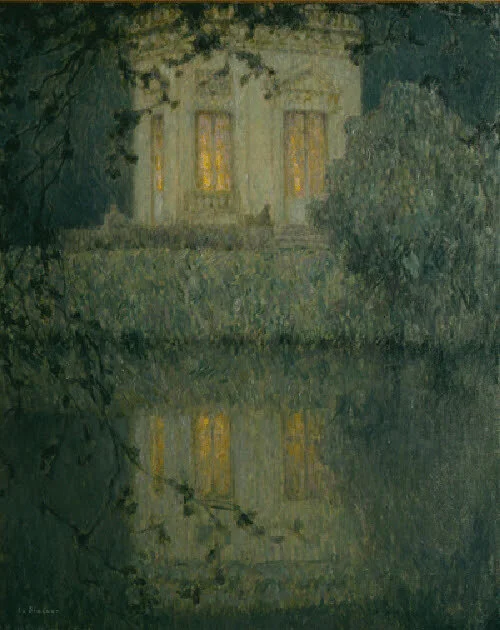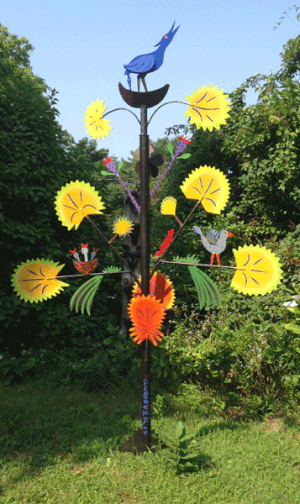
No hourly rates though
‘‘The Siesta,’’ by Janet Montecalvo, in the Duxbury Art Association’s “Winter Juried Show,’’ at the Art Complex Museum, Duxbury, Mass., through April 19.
Beautiful, at least at night
“Fogging in Twin River,’’ by Massachusetts artist Jurgen Lobert, in his show “Industrial Beauty,’’ at the Art Complex Museum, Duxbury, Mass., through Nov. 3
— Image courtesy Art Complex Museum
The museum says:
Lobert demonstrates that "that industrial views ... can appear like a tourist attraction at night, because night photography is transformative.’’
Why to be a vegan?
“Prosciutta” (clay, glaze, acrylic and epoxy), by Boston area artist Joe Caruso, in the show DIG, at the Art Complex Museum, Duxbury, Mass., through Aug. 11
— Image courtesy of Art Complex Museum
The museum says that DIG features the work of Joe Caruso, Jennifer Liston Munson, Palamidessi and Marsha Odabashian in a show that "recalls traditions, events, and customs across a range of cultures.’’ The artists in explore "what makes us human" by exploring the past and how it connects to the future. The show "values, preserves and calls attention to what came before so we can learn from the past as we cope with the present and prepare for the future."
Seeking the security of home
“Voiceless #1’’ (Indiana limestone), in “Passage’’ show, by Nora Valdez, at the Art Complex Museum, Duxbury, Mass., through September, 2025.
The museum says:
“A new installation on the museum grounds, ‘Passage,’ includes four pieces depicting crucial moments in a journey.
“Originally from Argentina, Valdez trained in both Italy and Spain before settling in Boston. Her sculptures represent the nature of change, life of the individual, and the forces that wear upon the human soul. Her immigrant-themed work describes the challenge of those caught within unfamiliar systems who seek the security of home.’’
Team player
“Portrait of Daniel King: Scouting for Men and Boys” (linocut, wood cut, lithograph), by Mark Sisson, in the group show “50/50: Collecting the Boston Printmakers,’’ at the Art Complex Museum, Duxbury, Mass., through Jan. 14.
'Sound's visual memory'
“Nightsong” (oil on canvas), by Boston-based artist Aaron Norfolk, in his show “Audio Visio,’’ at the Art Complex Museum, Duxbury, Mass., through Aug. 13
The museum says:
{Norfolk’s} “large, color-rich paintings begin with what he hears, not with what he sees. He says, ‘Sight and sound run parallel in our perception, and these works do not intend to confound the two. Rather, the interest is for the viewer to switch back and forth across subjectivity, allowing sound its visual memory. As a word becomes a sound’s visual placeholder, so these paintings become their portrait.’’’
No watering needed
“Round and Round” (glass smalti mosaic), by Boston-based artist Lisa Houck, in her show “Botanical Explorations: Mosaics and Paintings,’’ at the Art Complex Museum, Duxbury, Mass.
— Photo courtesy artist.
The museum says she creates "vibrant, imaginative images filled with color and pattern," capturing the shapes of the natural world using found and created ceramic tiles.
The Myles Standish Monument, in Duxbury
A great artist paints craftsmen on the Maine Coast
“Shipyard,’’ painted in 1916 by George Bellows (American, 1882-1925). It can be seen at the Art Complex Museum, Duxbury, Mass.
The museum says:
'‘The museum's permanent collection contains multiple works by American artist George Bellows. Bellows spent a few summers on the coast of Maine and its offshore islands in the early 1910s. The shipyard in Camden particularly drew his attention, and he created a series of paintings based on his time there, including ‘Shipyard’’’.
Camden Harbor. Camden and the Maine Coast in general have a long and famous tradition of boat/shipbuilding, though Camden has long been best known as a summer place for rich Northeast Corridor people (especially old-money WASPS) and others, many of them with fancy boats that they cruise and race in.
Or a mushroom cloud
“The Tree” (etching), by Marguerite Thompson Zorach (American, 1887-1968), at the Art Complex Museum, Duxbury, Mass. For a while a Californian, she later lived in New York City and in her family’s summer house in Georgetown, Maine.
Five Islands, Georgetown, Maine, from a circa. 1906 postcard published by G. W. Morris.
The museum says:
"Marguerite Thompson Zorach is best known for her early modernist paintings and late embroidery creations. One of the first women to be admitted to Stanford University, in 1908, she was invited to study in Paris by her aunt, which changed the course of her career. There she met Pablo Picasso (1881-1973) and Gertrude Stein (1874-1946). She attended the avant-garde school La Palette, where she met her future husband, artist William Zorach. During this time, she created etchings like this delicate rendering entitled “The Tree,’’ thought to be an olive tree with olive pickers resting nearby.’’
To read more please click here.
Have a seat but bring your own cushions
“Bent Bench” (black locust, concrete and stainless steel), by Mitch Ryerson, at the Art Complex Museum, Duxbury, Mass.
The museum explains:
”As part of our 50th anniversary celebration {this year} we held a call for artists for outdoor seating. Mitch Ryerson was one of five artists we chose to create benches to be placed in our newly landscaped woodland path. Mitch is an artist, designer and craftsperson specializing in wood structures and furniture. He began his career building wooden boats in Maine.’’
'Dip one's toes in'
“Poseidon’s Pocket” (collagraph), by Massachusetts artist Vivian Berman (1928-2016), at the Art Complex Museum, Duxbury, Mass.
The museum says:
“Berman used silk scraps, aluminum foil, and matte acrylic medium to create a variety of textures within the single image. The print conveys such an authentic impression of the sea, one is tempted to dip one’s toes in! The artist’s abstract renderings of the sea, sky, and landscape often conveyed a sense of solitude.
…. Berman was among a small group of artists who studied with Donald Stoltenberg (1927-2016), a printmaker who explored collagraph methods in the late 1960s. These artists advanced the medium and helped it to gain recognition as a fine-art form.’’
The Art Complex Museum
Powder Point Bridge, in very sandy Duxbury
— Photo by John Phelan -
In the South Shore breeze
“Wind Sculpture” (stainless steel and gold-plated stainless steel), by Michio Ihara, at the Art Complex Museum, Duxbury, Mass.
Tough like the Blue Jay
From the Art Complex Museum, in Duxbury, Mass.:
“In 2019, on the grounds of The Art Complex Museum, Donna Dodson and Andy Moerlein installed ‘Seeking Higher Ground.’ This is the second outdoor sculpture that the museum has been lucky to display. According to folklore, the Blue Jay is symbolic of clarity of thought and taking action. ‘Seeking Higher Ground’ is a clarion call to heed the warning signs of climate change. It reflects a hope that humans can unite to affect those changes needed to adapt and survive - like the Blue Jay.’’
“To see more of their work and to watch a short video they have created please
Taking flight in Duxbury
“Flight ‘‘ (mixed media/printmaking), by Mandy Fariello, in the Duxbury (Mass.) Art Association’s annual “Winter Juried Show’’ in February at the Art Complex Museum, in Duxbury
View of Bluefish River inlet, in Duxbury with King Caesar House in background. Duxbury is both an upscale Boston suburb and a place with many summer homes.
The John Alden House, built in 1653
Small town glow
“Moon Over Effingham (N.H.)” (acrylic), by Linda Hefner, in the Duxbury Art Association’s 2020 Annual Winter Juried Show at the Art Complex Museum, Duxbury, Mass., Feb. 2-April 18.
The Lord's Hill Historic District, one of the village centers of Effingham
The beauty of Shaker furniture
On Thursday, Dec. 12, The Art Complex Museum, in Duxbury, Mass., will offer a program on Shaker furniture.
The museum explains:
“Hands to work. Hearts to God. They called themselves the United Society of Believers in Christ's Second Appearing, but the world called them Shakers because of their ecstatic dancing. The collection of Shaker furniture and crafts at The Art Complex Museum is widely recognized among experts for its fine examples of classic Shaker design. The initial interest in Shaker objects was inspired by Maud Moon Weyerhaeuser Sanborn (the grandmother of current museum director, Charles Weyerhaeuser), whose home in the Berkshires was close to the Hancock and New Lebanon Shaker communities. Participants will discover how Shaker communities celebrated the holidays, and how objects from the collection were used in daily life.’’
The most famous Quaker center is Shaker Village, in Canterbury, N.H. The village was established in 1792.
At its peak, in the 1850s, more 300 people lived, worked and worshiped in 100 buildings on 4,000 acres in the central New Hampshire town, farming, selling seeds, herbs and herbal medicines and making textiles, pails, brooms and other products. Wikipedia says that “the last resident, Sister Ethel Hudson, died in 1992, and the site is now a museum, founded in 1969, to preserve the heritage of the utopian sect.
“Canterbury Shaker Village is an internationally known, non-profit historic site with 25 original Shaker buildings, four reconstructed Shaker buildings and 694 acres of forest, fields, gardens and mill ponds under permanent conservation easement. It has been designated a National Historic Landmark for its architectural integrity and significance.’’
Perhaps the Shakers were doomed by one of their rules — celibacy.
Canterbury Shaker Village, circa 1906
Night work
“The Music Pavilion at Versailles, Moonlight“ (oil on canvas), by Henri Eugene Le Sidaner, in the show “Highlights from the Permanent Collection: Nocturne ,’’ at the Art Complex Museum, Duxbury, Mass., through Jan. 12.
The museum says that "Nocturne paintings" were “originally defined as those that depict scenes evocative of the night, or portray subjects in a veil of light or at twilight. Nowadays, the term tends to refer to any paintings of nighttime scenes. Nocturne paintings are moody and alluring, capturing the unique tranquility that nighttime brings. Nocturne features works by a variety of artists across different countries and times.’’
Cozy or ominous?
“Lantern and Fireplace’’ (wood engraving), by Wanda Gag (1893-1946), at the Art Complex Museum, Duxbury, Mass. The museum says::
“Gág became a highly praised printmaker in New York in the 1920s and 1930s, and was recognized for her skill in depicting scenes of everyday life. She was born in New Ulm, Minn.,, and grew up with the customs and fairy tales of her parents' native Bohemia. She was widely known for her children's books, including Millions of Cats, and her illustrated translations of Grimm's Fairy Tales and Snow White and the Seven Dwarfs.
Lovely or ominous
Work by Alfred Glover in his “On the Grounds’’ show at the Art Complex Museum, Duxbury, Mass., Sept. 15-Jan. 12.


